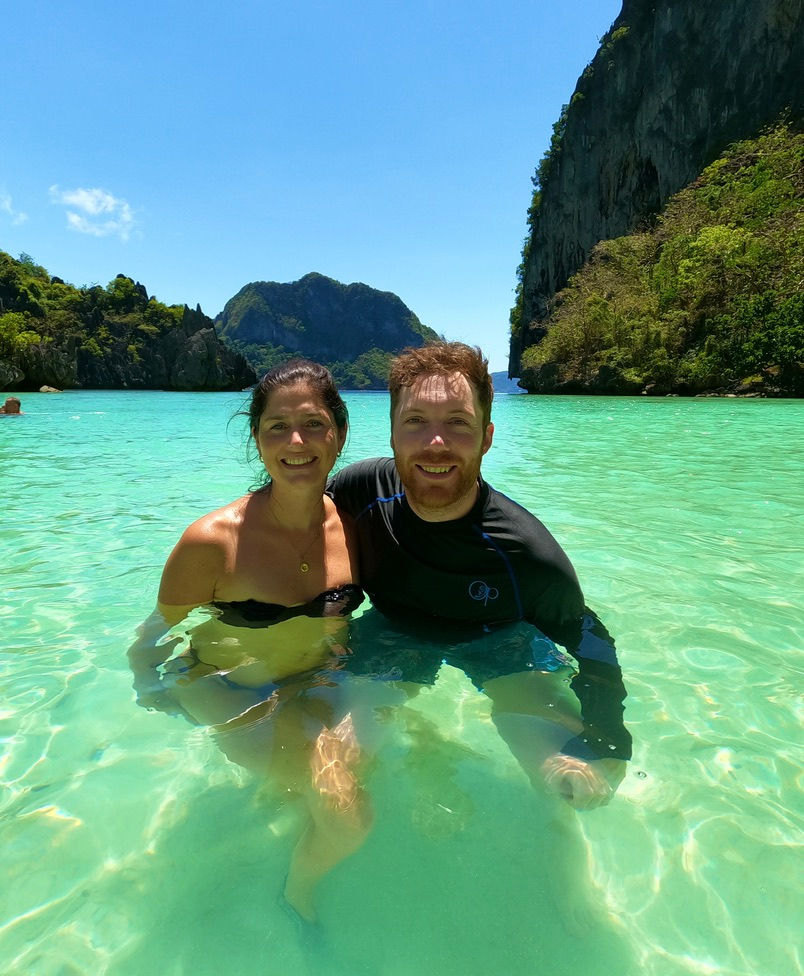Khiva, Bukhara, Samarkand - The Silk Road Cities of Uzbekistan
- Rory McPherson
- Oct 19, 2022
- 6 min read
From Tashkent we took a 13-hour sleeper train to Khiva which is a desert city located in Western Uzbekistan. Then we gradually made our way east and back to Tashkent by train. Stopping in various places on the way. The rail network is Uzbekistan is great and a very affordable way to travel the country. In total we spent about £70 each on trains and this was for 6 journeys ranging from 4 to 13 hours. We travelled from the western deserts to the Fengan Valley in the far east of the country. The trains are very comfy, arrive on time and a fun experience.
On the night train to Khiva, we got a surprisingly good night’s sleep. Our compartment was for 4 people, with two bunk beds in it. From Tashkent we were the only ones in the compartment, however two others joined us in the middle of the night getting on at Samarkand. We had the two bottom bunks which was much appreciated!

Once we arrived at Khiva at about 10am we took a quick taxi to our accommodation in the old city. We were stayed in The Islambek Guesthouse which was great. After we dropped our stuff off, we whacked on some sun cream and headed off to explore the ancient city. The old town is very small and has a mud wall going around out. Some steep stairs allow you to climb the wall and walk around the city giving you great views from above.
Khiva is like somewhere we have never seen before and is like going back in time. It gave us our first view of the madrasas, mosques and mausoleums that Uzbekistan is famous for. We were blown away by the beauty of them. The colourful tiled patterns and the structure of the buildings are amazing and are very well preserved considering how old they are. After seeing a few of the sites we enjoyed a nice cold beer and some shashlik (BBQ kebabs) and hit the streets again.
We purchased a city pass which gives you entrance to all the sites within the Ichon-Qala (the medieval old town). It’s about £10 each and well worth it. One of the best sites it gives you access to is the watchtower located on the city wall and part of the Kuhna Ark. Here you can get amazing sunset views and can observe the old town from above. Khiva’s most famous sight is the Kalta Minor Minaret which is much fatter than most and covered in turquoise tiles. The building of it began in 1851 and according to legend it was meant to be so tall you would be able to see the whole way to Bukhara, unfortunately the Khan dropped dead in 1855 and the structure was never finished. We also visited Juma Mosque which is interesting because it is held up with 218 beautifully carved wooden columns, some of which are original and date from the 10th century.
Khiva has numerous rooftop restaurants which are great to get supper at after a busy day of site seeing. Although it does get chilly here during the night! In total we spent 3 nights here which is one more than we originally planned. This is because the train to our next stop (Bukhara) was full. Khiva is a small city so 2 nights would have been enough, but we certainly weren’t complaining as it’s such a magical place.

Our next stop on the Silk Road was Bukhara which was a 4.5-hour train east from Khiva. We stayed at the delightful Arts Guesthouse which was well located in the old town. This place was run by a lovely family who also had a photography gallery. The husband of the lady running it sadly died in 2020 but was a famous photographer from Uzbekistan.
Bukhara is a bigger city than Khiva so doesn’t have the quiet empty ancient streets, but its old town is still beautiful and has even more mosque, madrassas and mausoleums, all of which have the typical stunning blue & turquoise tile work. As we had to spend an extra night in Khiva due to train availability, it meant we had once less night than planned in Bukhara. So, to make use of our time here we hired a city guide which we arranged through the guesthouse and was 100% worth it. It cost us just over £20, and the guide was great. She showed us parts of the city we didn’t know existed, took us inside places we had previously walked past without noticing and explained the history of all the sites and dynasties that had ruled in Bukhara. She was also really good at explaining day to day life in Bukhara and in Uzbekistan as a whole. Talking to us about religious festivals, education systems and politics.
Lyabi-Hauz is a plaza built in 1620 around a pool surrounded by Mulberry trees, which was very peaceful, and we had a few beers here one evening. We noticed lots of these pools around the city, which until a century ago had been the local’s main source of water, with the pools linked by canals. As you can imagine it wasn’t the most hygienic and plagues and water borne diseases were rife, which was why The Bolshevik’s drained lots of the pools and modernised the water system in the 1920’s.
We also visited the famous Bug Pit which is where Stoddart & Conolly two British men were kept and tortured by having rats, scorpions and bugs thrown on them while they were held prisoners before being beheaded in 1842. Apparently Stoddart was sent to reassure the Emir Nasrullah Khan about the British invasion in Afghanistan but arrived with no gifts and disrespected the Khan so was imprisoned. Conolly was then sent by the British Empire to rescue him but ended up in the Bug Pit too. It was interesting seeing the prison and Bug Pitt, but we were relived to get outside again!
As the food in Khiva wasn’t amazing (mainly because it’s remote desert location) we were keen for some good meals in Bukhara. On the first night we went to a charming well reviewed restaurant in an old Jewish merchant’s house, and it was delicious and the restaurant beautiful. On our other night we went to an Italian restaurant (it’s nice to have a change from the local food every now and again) and again had a tasty meal.

Samarkand would be our next stop and when it comes to seeing ancient sites, this is the best place to go in Uzbekistan. Whilst it does not have a charming historic old town like Khiva and Bukhara, the size of the religious buildings really makes up for it.
It is home to Registan Square which is the most famous and awesome site in all of Uzbekistan as it has three grand madrassas facing each other in one courtyard. We arrived here early on our first morning to beat the crowds and were so pleased as we got to gawk at the beauty of the decoration and colours with barely anyone else around. The middle building is the Tilla-Kari Madrasa which has the most stunning gold and blue mosque within its courtyard. The Madrasa on the right-hand side is rather unique as it features two roaring lions chasing some deer. This is very unusual for as Islamic site, as depiction of animals is banned on religious buildings.
We spent two full days exploring the other sites in Samarkand. Here they are all a similar design to the ones in Khiva and Bukhara but considerably bigger. When you see them for the first time it’s hard to find words to describe them, such is the size and beauty of them. Sites we visited were the Bibi-Khanym Mosque, Shah-i-Zinda, Hazrat-Hizr Mosque and Gur-e-Amir Mausoleum.
We stayed in Hotel Rahmon which was ideally located close to Registan Square. It had a lovely courtyard and outside area, but the beds were a bit hard, and the bathroom needed a makeover!

Overall, we loved the Silk Road cities of Uzbekistan. The architecture was mind blowing, particular when you learn how old some of the buildings are. The painted ceilings, the tiles and colours were stunning, with so much blue, turquoise and gold used. The people have been so friendly throughout our time here and the craftsmanship on display in the cities is very impressive. Liv would love to come back with an empty suitcase to buy a load of ceramics, silk carpets, embroidered jackets and trinkets to fill the house with. The trains were a delight to travel on and our guesthouse generally very good. We would recommend everyone puts a 10-day holiday to Uzbekistan on your list.



























コメント